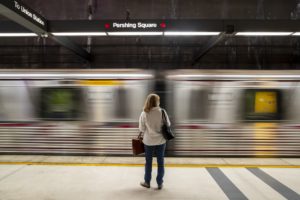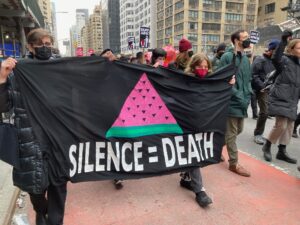Soy also helps stop tumors from growing. Tumors flourish by taking over existing blood vessels and spurring on new vessels. This is called angiogenesis and isoflavones impede this process by helping to stop the growth of new blood-vessel cells. Without this continued blood supply, the tumor can’t grow. Besides soy’s antiproliferative, antioxidant, anti-angiogenesis, and anti-inflammatory properties soy is considered a complete protein, meaning it has all 9 essential amino acids needed by humans. If after reading this (and the annotated studies) you decide to add whole, soy foods to your diet, Pink Lotus suggests you strive for organic, fermented products. They not only have all the benefits listed above, but they are natural probiotics. Foods in this category include tempeh (fermented soybean cake), miso (seasoning paste made from fermented soybeans), tamari (gluten-free fermented soy sauce), and natto (a fermented soybean condiment/breakfast). You can also add non-fermented options such as organic tofu, edamame (soybeans), and soy milk. Just make sure the first ingredient is “organic soybeans.” Put it back on the shelf if its ingredients are soy isolate or soy protein.
THE TRUTH ABOUT SOY AND BREAST CANCER
John Robbins: Now, Kristi, this is an important topic, and I know it’s one that you’ve researched in great depth. Can you help us understand what the truth is about soy? Can you set the record straight about soy?
Dr. Kristi Funk: I’d love to, and thank you for asking. So first off, apologies for 19 years of giving you false information about avoiding soy. I was the breast cancer surgeon out there saying, “You know what? We know that soy contains isoflavones, some of which act like phytoestrogens, these plant- based, estrogen-like compounds. And they have very near identical chemical structure to the estrogen in your body. So, you know, 80% of all breast cancer cells have a little receptor sitting on them for estrogen, and when estrogen hits that receptor, it will send a signal to the cancer cell to multiply and divide. Well, we don’t know if these plant estrogens are just doing the same thing, filling the receptor, so how much do you like tofu? Spit that miso out of your mouth.”
Right? Like, I was militant about getting rid of the soy. I go to write the book. Deep dive into the science to literally pull the scientific facts for my position out of the literature and put it in the book. And uh-oh, that’s where I realized I was embarrassingly wrong, because in point of fact, and here it is, I’m going to make this simple, understandable, and it will be a massive ah-ha moment for, I hope, the majority of listeners who are still on the fence about soy.
You have two receptors in your body for estrogen, alpha and beta. Alpha is attached to the cancer cells. But with 1,600% more affinity, the phytoestrogens in soy products bind to beta receptors. And what that activates is fascinating. Number one, activated beta receptors shut alpha down, so it literally takes away the activity of the cancer receptor.
And it goes flying out into your body to your fat cells, wherever, where you have a fat cell, you have an enzyme inside of it called aromatase busily churning away hormones from your adrenal gland, like androstenedione and testosterone, into estrogen. Soy, via the beta receptor, goes out and inactivates the aromatase, so now you’re getting less conversion of other hormones into estrogen. So you’re decreasing your estrogen that can fuel the alpha receptor.
Well, wait a minute. So, wait. But I said mostly it hits beta. What does soy do when it does hit alpha? Is it bad there? Well, it activates that receptor literally with 1/10th to 1/100th of the capacity of your actual estrogen.
So now it’s acting like a molecule some listeners may know, tamoxifen. This is a very commonly used breast cancer anti-estrogen drug that hits a receptor like a car sitting in the parking space you wanted so badly, and it just sits there and blocks it, but it really doesn’t have much downstream activity.
So soy is not only safe to consume, it’s beneficial to consume. But before 2009, the literature had never reported any good longitudinal studies looking at the health effects of soy consumption in cancer patients. So, okay, we know it’s safe for women to take, and it actually can decrease breast cancer risk.
Lastly, the Physicians Committee for Responsible Medicine (PCRM) reports that Soy foods may reduce the risk for other cancers, too, including colon, lung, endometrial, ovarian, and prostate. For example, the Shanghai Women’s Health Study examined the diets of 444 women diagnosed with lung cancer. After adjusting for outside factors, researchers found that patients who ate the most soy cut their chances of dying from the disease by nearly half. The same was found to be true in nonsmoking Japanese men.
And what about men? PCRM adds that soy products have no adverse effects on men. In fact, they may help prevent cancer. A meta-analysis showed that neither soy products nor soy isoflavone supplements affect testosterone levels in men. Another analysis of 14 studies showed that consuming more soy resulted in a 26% lower risk of prostate cancer. Yet another meta-analysis published in Nutrition and Cancer showed the same results for prostate cancer: a protective effect for men who eat tofu. PCRM concludes that Soy products offer a wide array of health benefits. Eating whole soy foods may reduce the risk of breast cancer and several other types of cancer, fibroids, and even inflammation. Soy is helpful for bone health, heart health, and menopausal symptoms. However, the benefits of soy appear to come from foods made from whole soy. Focus on tofu, tempeh, edamame, soy milk, and miso as part of a balanced, plant-based diet.
Sources:
Click here for the Pink Lotus Foundation’s article on soy.
Click here for the PCRM article on soy.
Click here for the video clip of Dr. Kristi Funk on the Rachael Ray Show explaining the health benefits of soy.
Click here for the Food Revolution Network’s Website.





